FESTIVALPROGRAMM BLOG
AUSZÜGE IN DEUTSCHSIMPLICITY - the art of complexity - ARS ELECTRONICA 2006 - Festival für Kunst, Technologie und Gesellschaft - Linz, Do 31. August – Di 5. September
28
Jun
Teemu Kivikangas is designer, media artist and film-maker working with
independent games and experimental movies. He’s member of VJ-group
Amfibio and Katastro.fi-collective. His films and works have been
exhibited in festivals in Finland and internationally.
Richard Widerberg (SE/FI) is a media-artist and musician working mostly with sound-related projects. His practice involves investigating the many dimensions of sound as well as making live performances based on his recordings.
Teemu Kivikangas & Richard Widerberg: Metamorphosis
28
Jun
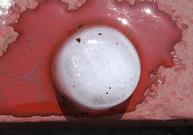 © Kivikangas & Widerberg
© Kivikangas & Widerberg
An audiovisual performance based on recordings of ice in both the Northern and the Southern hemisphere. The sounds used in the work are recordings from the ice of a lake in Northern Sweden. One can hear how the ice is constantly moving, affected by the wind, the temperature, the water beneath and the air pressure. Visual material depicts the same element, ice, in a very different context - South American megalopolises of Buenos Aires, Rio de Janeiro and Lima in the blazing heat of the summer – where it leads a short life before melting into water.
The visuals contrast and juxtapose the sounds from the isolated nature of the extreme North with images from the busy, overcrowded cities of the extreme South. This audiovisual material is then manipulated, re-cut and re-interpreted by the performers in real-time with two synchronized computers. The result is an experimental movie creating an image of transition, transformation and adaptation.
Metamorphosis: Teemu Kivikangas & Richard Widerberg
28
Jun
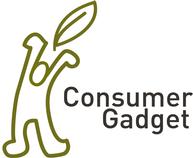 © Anna Salmi
© Anna Salmi
Consumer Gadget is a tool for consumers who would like to spend their money more ethically, supporting sustainable development and other good things. The main idea is to utilize the bar codes of consumer products for the cause of good: bar codes are unique identifiers that can be used to fetch ethical information about the product.
Consumer Gadget is a software for mobile phones, so it can be used at the time of purchasing. Users can scan bar codes with the latest camera phones and get the ethical information over GPRS connection, but the information is also available for users with older phone models using WAP or SMS technologies. Consumer Gadget can be used free of charge and it is based on open source technology.
Consumer Gadget: Wesa Aapro
It is being developed by non-profit organization Kulutuskapula ry based in Helsinki, Finland.
27
Jun
Teemu Kivikangas (FI) is designer, media artist and film-maker working with independent games and experimental movies. He's a member of VJ-group Amfibio and Katastro.fi-collective. Teemu's films and works have been exhibited in festivals in Finland and internationally.
Teemu Kivikangas, Sumea Studio, Digital Chocolate, Inc.: Johnny Crash & Johnny Crash Stuntman Does Texas
27
Jun
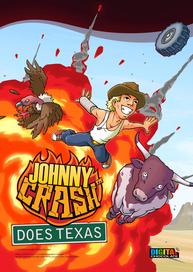 © Sumea Studio, Digital Chocolate, Inc.
© Sumea Studio, Digital Chocolate, Inc.
Two critically acclaimed mobile games about a teenager who has watched way too many episodes of certain reality television shows and is determined to become a celebrity himself by doing crazy stunts. Your goal as Johnny is to perform outrageous stunt flights as a human cannonball. Fly inside a thundercloud and be electrocuted by lightning or try crash landing into a cactus. Or maybe you need a haircut - trim your hair with helicopter blades! Never has performing pain-inflicting stunts been so freakishly entertaining.
Game play is simple and quick to learn - you need only one button to play - yet highly addictive and hard to master. After the flight you can review a replay of your flight and keep a scrapbook filled with snapshots of your "greatest hits". Titles are exhibited with focus on character development, illustrating the design process of game character from an initial idea into a finished product. Developed by Sumea Studio, Digital Chocolate Europe.
Johnny Crash & Johnny Crash Stuntman Does Texas: Teemu Kivikangas, Sumea Studio, Digital Chocolate, Inc.
26
Jun
Campus | posted by GerdaHinterreiter | at 14:30:00
MobiLenin – Mobile Group Interaction with a Multi-track Musicvideo
 © Jürgen Scheible
© Jürgen Scheible
MobiLenin is an audience participatory art installation that allows people to interact simultaneously with a multi-track music video shown on a large public display using their personal mobile phones, effectively empowering the group with the joint authorship of the video.
It aims to provide enriched entertaining and social experiences by allowing people to interact with the musician “Lenin’s Godson” in the virtual domain, exceeding the limitations of the physical domain, e.g. by turning him into a skeleton.
By a collective vote using the mobile, the performance style of the artist can be changed in real time ranging from “not playing guitar”, “not singing” to performing as a skeleton. Voting occurs in ongoing voting intervals triggered by the system. As an incentive for interaction, MobiLenin provides a lottery. The winner receives a coupon for free pizza or beer in form of an image on the mobile phone.
MobiLenin provides a new form of interactive entertainment for pubs and other public places.
MobiLenin: Jürgen Scheible (Artist: Lenin’s Godson)
26
Jun
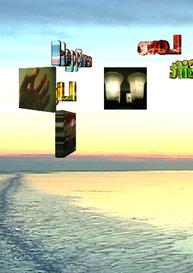 © Jürgen Scheible
© Jürgen Scheible
Word in Space is an audience participatory art installation that invites people to use their mobile phone to post a word or image into a 3D space onto a large public display. The posted words float slowly in the screen space as 3D text, images as textures on small cubes, rotating around their X or Y axis , retreating gradually from the picture plane over time.
The idea of this work originates from the German idiom "Ein Wort in den Raum stellen" meaning to "put a word up for discussion and thought".
By creating graphical objects, the audience can place their thoughts into space, which then can be observed visually. This allows meditating on them, letting the mind wander round, still helping to keep the focus. At the same time, the words and images posted by other people can spark new thoughts in each viewer’s own thinking, connecting the minds.
The fading away of the objects into an ethereal space might remind the viewer that our human lives, too, will one day fade away - from the real space to where?
Word in Space: Jürgen Scheible (Artist: Lenin’s Godson)
25
Jun
Jürgen Scheible (Artist: Lenin’s Godson), Germany, a Researcher, Engineer and Media-Artist. He is a PhD candidate at Media Lab, Univ. of Art & Design, Helsinki and was a visiting scientist at MIT, USA. 2006 he became a Forum Nokia Champion, being a bridge builder between art & engineering.
Jürgen Scheible: Lenin's Godson's MobileArtBlog
25
Jun
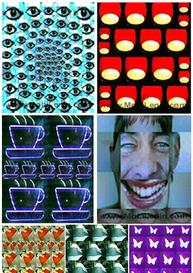 © Jürgen Scheible
© Jürgen Scheible
The MobileArtBlog is a blog of digital art images created with a mobile phone. It is the travel journal of artist Lenin’s Godson. Instead of ordinary images and text, this blog holds a collection of popart images, each in phone screen size, which the artist creates out of stimulating experiences along his travels. Inspired by shapes, colours and forms of objects in different cities, places and situations, he attempts to capture the moment by turning it into a memorable art piece on the spot.
By using Python on the phone for making collages through taking a photo, resizing, copying and placing it freely on the canvas, the art image is instantly created and uploaded incl. GPS data.
Fans and art lovers can receive the images in real . time via a Konfabulator widget or RSS feed on their PC or mobile, enabling instant sharing on a global scale.
People can instantly rate an image, triggering feedback to the phone of Lenin’s Godson making it vibrate. Among the views of the imagery on his blog is a Google map, marking where the artist has travelled.
Lenin's Godson's MobileArtBlog: Jürgen Scheible (Artist: Lenin’s Godson)
24
Jun
Johanna Höysniemi (FI) is a media art student who is finalizing her Ph.D thesis in the field of physically interactive computer games. Her thesis focuses on the design and evaluation of embodied games and studies the phenomenon of gaming as a public performance.
Perttu Hämäläinen (FI) research scientist/interaction designer. D.Sc.(Tech) (2006), MA in New Media (2002), University of Art and Design Helsinki Media lab, Finland. M.Sc.(Tech) (2001), Helsinki University of Technology, Department of Electrical and Telecommunications engineering, Finland. Projects and publications: www.tml.tkk.fi/~pjhamala
Johanna Höysniemi & Perttu Hämäläinen: QuiQui’s Giant Bounce
24
Jun
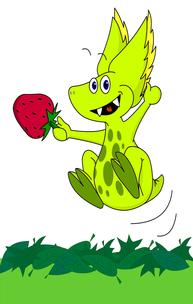 © J. Höysniemi & P. Hämäläinen
© J. Höysniemi & P. Hämäläinen
QuiQui's Giant Bounce is a physically and vocally interactive computer game aimed at 4 to 9 year old children. The game is not controlled using a joystick or a keyboard. Instead, the user's body movements and voice are sensed via a webcam and a microphone.
The main character QuiQui is a curious little green dragon that mimics the user's movements and shouts and exhales sparkles when the user shouts. The game is based on research on children's physical development, augmented with usability tests and interviews at schools and daycare centers. The goal is to provide an immersive and physically engaging alternative to traditional computer games: QuiQui activates children to use their whole body and develops their physical abilities like coordination and balance. The ways of moving in a game are motivated by an enticing storyline and rich audiovisual content. The game features technological innovations that enable physical interaction in every home. Compared to games based on sensory devices like a dance mat, QuiQui's user interface is full-body and wireless.
QuiQui’s Giant Bounce: Johanna Höysniemi, Perttu Hämäläinen
23
Jun
Zeenath Hasan (IN) is an independent media designer / researcher practicing design for development. She exercises the potential of mobile information and communication technologies to facilitate grassroots activities and networks.
Richard Widerberg (SE) is a media-artist and musician working mostly with sound-related projects. His practice involves investigating the many dimensions of sound as well as making live performances based on his recordings.www.riwid.net
Richard Widerberg & Zeenath Hasan: IMPROVe
23
Jun
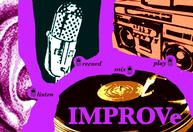 © Antti Ahonen
© Antti Ahonen
IMPROVe is an aural architecture for socio-cultural exchange. Sonic realities of the everyday are improvised live in a non-linear mode.
IMPROVe explores the role of the mobile phone user as a creator of her/ his own content. It attempts to define the mobile device as a tool for environment awareness by making the user conscious of their immediate sonic surrounding.
Scenario
A group of friends record sound objects and soundscapes from their daily life through a mobile device. The group meets in a local pub with a soundsystem. Here they perform a live-remix of the sounds on their mobile devices. Through the sonic improvisation of their everyday soundscape, they affect their experience of the here and the now.
Functionality
IMPROVe collects sound via a mobile device and sends them to a location where they can be played back into a soundsystem. The same mobile device controls the playback of the collected sounds in the soundsystem. Playback control occurs in the physical location of the soundsystem. The playbacked sounds are processed live via interaction on the mobile device. The output of the processed sound can be directly heard through the soundsystem.
IMPROVe: Richard Widerberg & Zeenath Hasan
Development Partners: MAHITI
Project Partners: Åsa Ståhl, Kristina Lindström
22
Jun
Viki Ølgod (DK) has during the last years focused into intermediated communication tools and the social impact of those on modern interactions patterns.
Viara Gentchev (CA) explores what she calls ‘digital reconstructions’ of iconic representations in which questions of technological progress, ethics, authorship and originality are intertwined.
Ksenia Avetisova was born in the Southern Russia in 1983. She has an experience of studying and work in Russia, USA and Finland. Currently involved in a number of international projects among which is the interactive media installation “The EyeSight”.
Viki Ølgod, Viara Gentchev & Ksenia Avetisova: The Eyesight Project
22
Jun
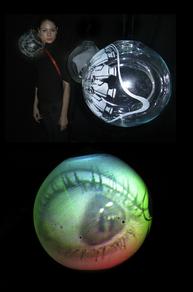 © Solarhive.com
© Solarhive.com
The Eyesight Project is an interactive sculpture created to increase the awareness of our post-modern approach to surveillance. Visibility in a way replaces force as a tool of control, we ask ourselves what the contemporary definition of privacy is or may become in the future.
Eyesight’s concept explores the archetype of total surveillance; a way to improve discipline in society such as the architectural form invented in the early 1780 by Samuel Bentham (Panopticon).
The idea of a closed circuit television system monitored by a handful of functionaries is one way for our contemporary mind to grasp the idea.
In a world of constant society driven need for security, surveillance becomes the calming factor in achieving this inner peace and thus, a familiar part of our daily life. The installation displays the omni-present icon of surveillance: the eye in the sky. As a spectator trying to grasp the pulse of the surveillance society the installation visualizes the never encountered observer.
The Eyesight Project: Viki Ølgod (DK), Viara Gentchev (CA), Ksenia Avetisova (RU)
21
Jun
Kalle Määttä is an MA student in UIAH Media Lab. He also holds a M.Sc. degree in geography. Besides studies Kalle has been working on the cutting edge of mobile interactive media and entertainment for years, holding such positions as CEO, Creative Director and Game Designer.
The Global Dignity Project is an international group working to increase dignity in globalisation. The group was started by Prof. Pekka Himanen, Crown Prince Haakon, and activist John Bryant
Kalle Määttä: Dignity Nation / Global Dignity Project
21
Jun
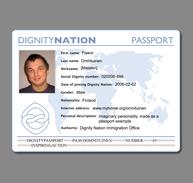 © Kalle Määttä
© Kalle Määttä
Dignity Nation is a movement and community created around the Dignity Principles introduced in Global Dignity Project www.globaldignity.org. The goal of the Nation is to create such a force that the voice of dignity can be heard even on the highest levels of power!
The mission of the Dignity Project is to implement globally the universal right of every human being to lead a dignified life. By signing the five Dignity Principles (introduced under http://globaldignity.org/index.php) you express your adoption of these principles for your action. To give your voice also a face, you also become a 'citizen' of the virtual Dignity Nation, where your name is shown along with your picture. It's not a real country but a community that exists to concretize the idea that you belong to a group of people that calls for more dignity in our world.
Dignity Nation / Global Dignity Project: Kalle Määttä
20
Jun
The Equilibrium Project was created by Media Arsonists, a free experimentation group based in Helsinki, Finland. The group consists of Dominic Leskinen and Lauri Huikuri, both students at the Media Lab, University of Art and Design Helsinki.
Media Arsonists: Equilibrium
20
Jun
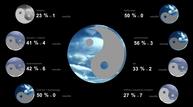 © Media Arsonists
© Media Arsonists
This project is a visual representation of the balance of "power" or state of equilibrium in the world. The visualisation is based on live news feeds, which are refreshed in real-time in 12-24 hour periods.
News articles from live RSS feeds, such as BBC World and CNN are passed through a PHP server, which obtains a set of results for each article's content.
We use Google API searches with positive/negative keyword sets to determine the 'contemporary' value of the news. I.e. If the number of search results that Google returns from the news article is higher for positive keywords, then the article gets a percentage of 50-100, or 0-50 conversely.
The results from Google are based on a cross-section of the current Internet population's views. And therefore are not necessarily biased or attached to any particular political, national or regional model.
Each article is categorised using a set of specific keywords, The category which yields the highest number of search results becomes the article's category.
The purpose of this project is to provide a live and changing picture of global news trends that influence our everyday lives. In a sense it's like a clock, but rather than show the time, it shows the direction or state of current affairs. Equilibrium.
Equilibrium: Media Arsonists
19
Jun
Meeri Mäkäräinen was born in 1982 in Pudasjärvi, Finland. She has studied
at UIAH since 2001 (Media Lab since 2005) and at Helsinki University of
Technology since 2002. She works as a research assistant at Helsinki
University of Technology.
Meeri Mäkäräinen: Ruby
Blog Autoren:
Maria Hieslmayr Cornelia Sulzbacher Wolfgang Bednarzek Gerda Hinterreiter Didi Offenhuber Beta Lounge Artists Sonja Meller StWSt denCity.net
Suche:
Kategorien:
Conferences Animation Festival Events, Concerts & Performances Campus Exhibitions e-lobby Prix Ars Electronica
Recent Posts:
Photographs of the 2006 Festival Media lab thanks! Ars Electronica Center FM4 Live from Ars Electronica in Linz
Archiv:
Posts 180 - 160 Posts 160 - 140 Posts 140 - 120 Posts 120 - 100 Posts 100 - 80 Posts 80 - 60 Posts 60 - 40 Posts 40 - 20 Posts 20 - 0


